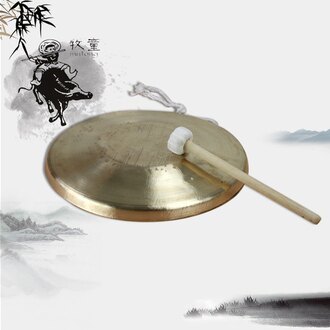Gong 鑼
Dublin Core
Title
Gong 鑼
Subject
Chinese music, Sound
Description
It is an percussion instrument that takes the form of a flat, circular metal disc which is hit with a mallet.
Date
Northern and Southern Dynasties (420–589 AD)
Format
Metallic, Diameter of 50 cm-150 cm
Type
Craft
Crafts Item Type Metadata
Crafting Methods
Gongs are made mainly from bronze or brass but there are many other alloys in use. They are made of a bronze alloy composed of a maximum of 22 parts tin to 78 parts copper, but in many cases the proportion of tin is considerably less. This alloy is excessively brittle when cast and allowed to cool slowly, but it can be tempered and annealed in a peculiar manner to alleviate this. When suddenly cooled from red heat, the alloy becomes so soft that it can be hammered and worked on the lathe then hardened by reheating
Materials
Bronze / Brass / Copper
Usage and Application
The gong is struck by a large round or flat-faced mallet, creating a powerful, rich, and resonant sound. Because of its legato character, the instrument is not suitable for playing rapid rhythms. In Shen Yun dances, the Chinese gong is often used to enhance the music’s power, accentuate its beat, or express sacred solemnity. Its sound demands and immediately gets attention.
Collection
Citation
“Gong 鑼,” CCCH9051 Group 64, accessed January 13, 2026, https://learning.hku.hk/ccch9051/group-64/items/show/31.

